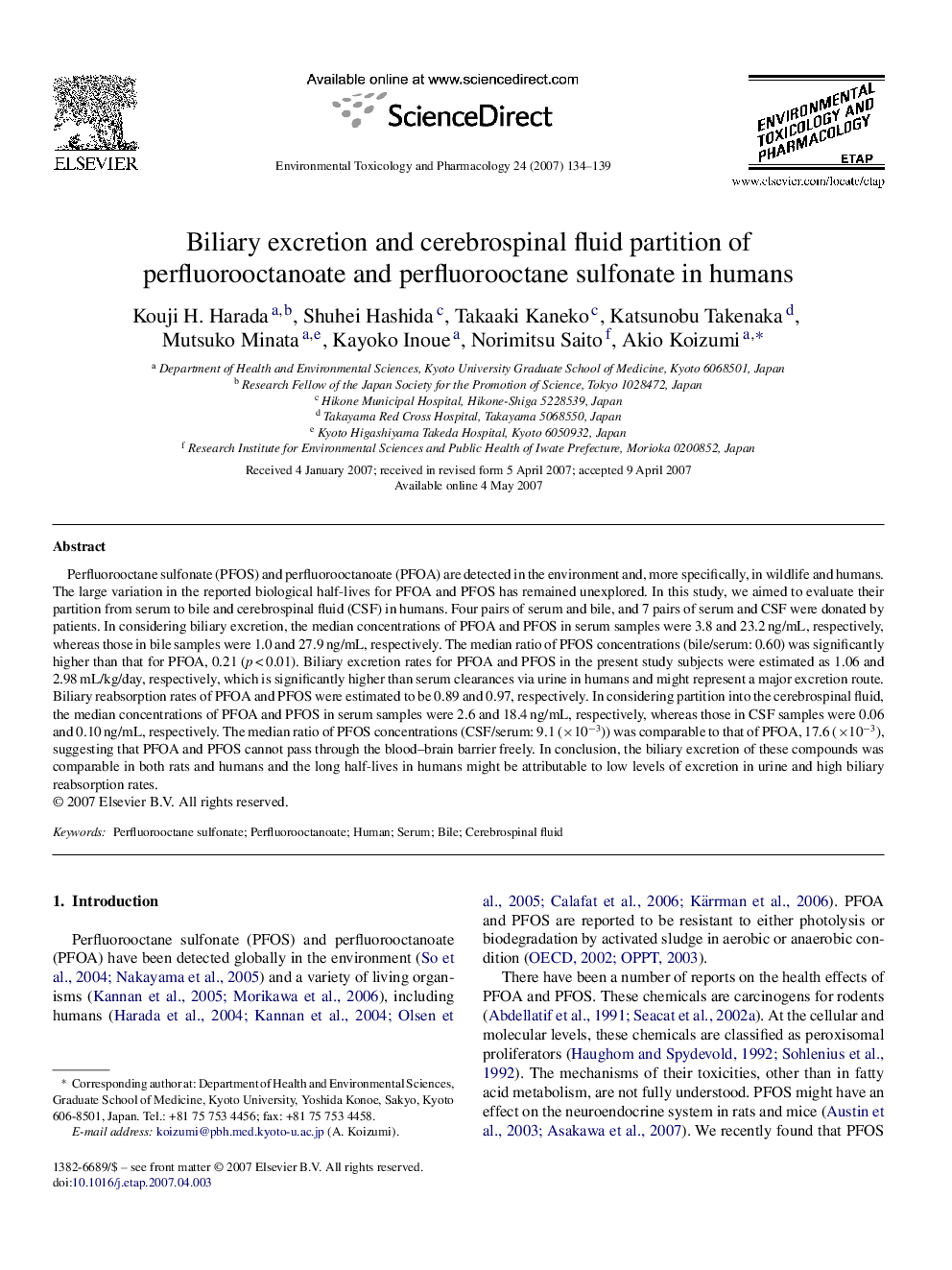| Article ID | Journal | Published Year | Pages | File Type |
|---|---|---|---|---|
| 2584445 | Environmental Toxicology and Pharmacology | 2007 | 6 Pages |
Perfluorooctane sulfonate (PFOS) and perfluorooctanoate (PFOA) are detected in the environment and, more specifically, in wildlife and humans. The large variation in the reported biological half-lives for PFOA and PFOS has remained unexplored. In this study, we aimed to evaluate their partition from serum to bile and cerebrospinal fluid (CSF) in humans. Four pairs of serum and bile, and 7 pairs of serum and CSF were donated by patients. In considering biliary excretion, the median concentrations of PFOA and PFOS in serum samples were 3.8 and 23.2 ng/mL, respectively, whereas those in bile samples were 1.0 and 27.9 ng/mL, respectively. The median ratio of PFOS concentrations (bile/serum: 0.60) was significantly higher than that for PFOA, 0.21 (p < 0.01). Biliary excretion rates for PFOA and PFOS in the present study subjects were estimated as 1.06 and 2.98 mL/kg/day, respectively, which is significantly higher than serum clearances via urine in humans and might represent a major excretion route. Biliary reabsorption rates of PFOA and PFOS were estimated to be 0.89 and 0.97, respectively. In considering partition into the cerebrospinal fluid, the median concentrations of PFOA and PFOS in serum samples were 2.6 and 18.4 ng/mL, respectively, whereas those in CSF samples were 0.06 and 0.10 ng/mL, respectively. The median ratio of PFOS concentrations (CSF/serum: 9.1 (×10−3)) was comparable to that of PFOA, 17.6 (×10−3), suggesting that PFOA and PFOS cannot pass through the blood–brain barrier freely. In conclusion, the biliary excretion of these compounds was comparable in both rats and humans and the long half-lives in humans might be attributable to low levels of excretion in urine and high biliary reabsorption rates.
